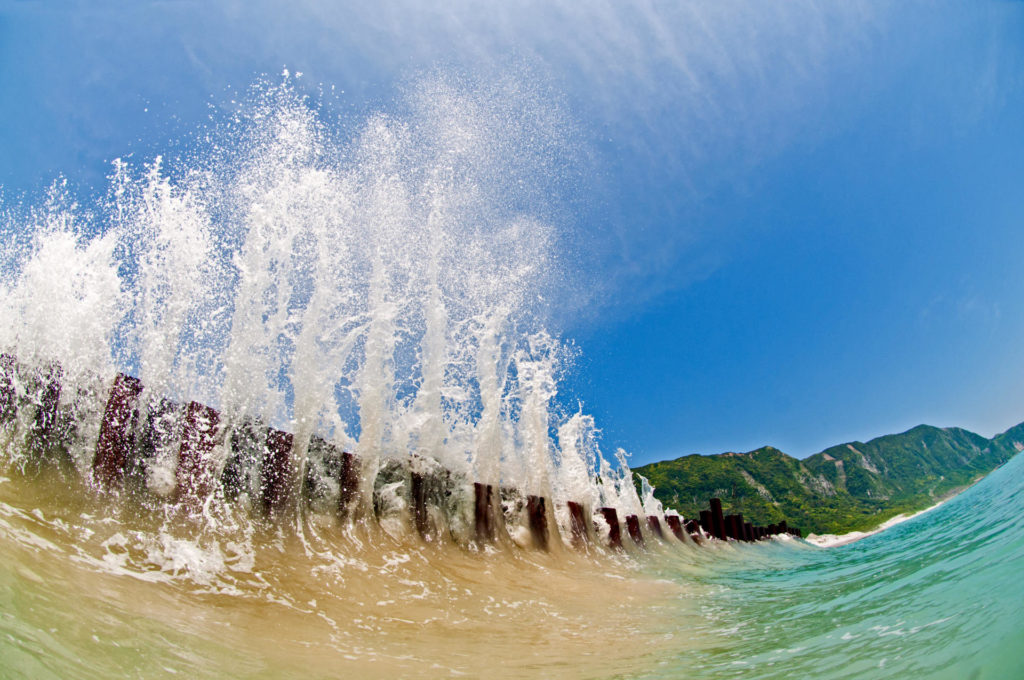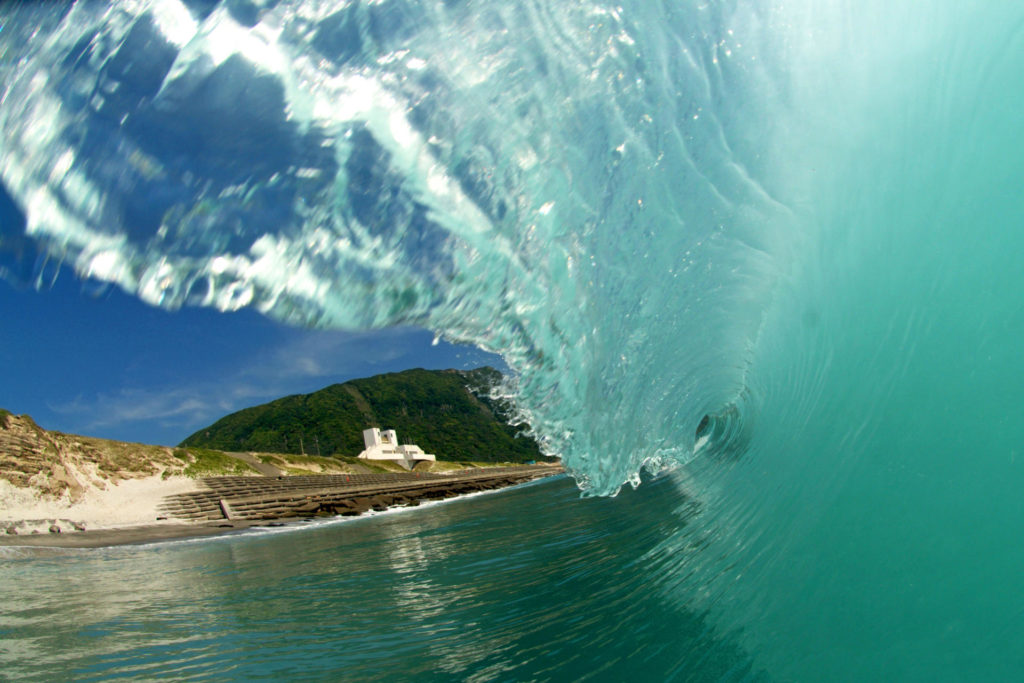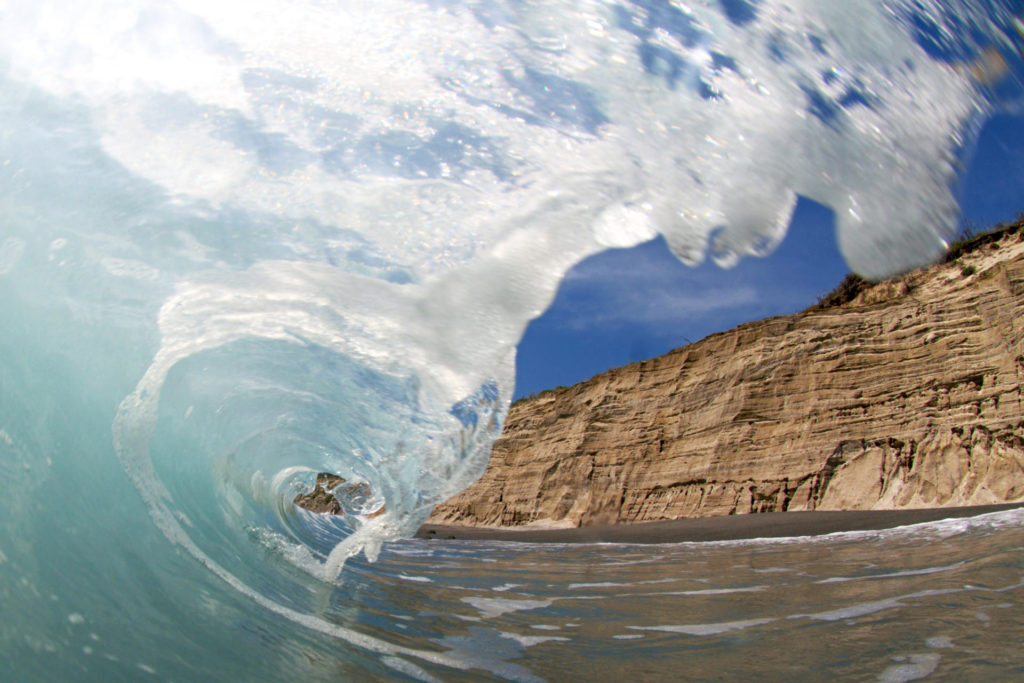My first trip to Japan hadn’t produced any pictures worth talking about. The weather didn’t cooperate, and the water clarity at the beaches was pretty bad the days I visited.

The day I arrived in Tokyo on my second trip, I was welcomed by a large storm passing through, carrying lightning, thunder and heavy rain. Heading off to attend an event in Aoyama, I got caught without an umbrella. I showed up dripping wet, which actually doesn’t bother me too much because of my line of work, but I think the hosts might have had other thoughts seeing the puddles form under my shoes in their store. It all worked out; but that’s another story.
That night I slept right through the storm but woke up to a dead stillness early in the morning after it had subsided. My friend from Hawaii who helps out with my business was also wakened by the silence. He had lived in Japan and was showing me around. It was pitch black out, and we were wide awake.
With nothing scheduled until that afternoon, we saw an opening for an adventure. After pulling up various Japanese weather Web sites, we thought the predictions for the day had changed and looked great for Kanagawa, Chiba and the Izu beaches—clear skies, light winds and some leftover waves from the storm. The biggest waves looked to be out on the fringe of the weather map, the Izu Islands, which include Niijima.

I really wanted to make it to Niijima Island someday but didn’t think it would happen on this trip. We had no idea how to get there but, since the island offered the biggest waves and seemingly perfect conditions, we were determined to find a way.
We continued our Internet research and found a small plane left for Niijima four times a day from Chofu Airport, west of central Tokyo. The timeline seemed tight and would require covering a lot of ground, but we figured, if we could get on the first flight out and then return on the second flight a few hours later, we could make it to our late afternoon commitment in Yokohama.
We tried calling to see if seats were available, but the airline office didn’t open until 8 a.m. In order to make that first flight, we had to get to the airport early, so we decided to leave it to fate and hope the plane wasn’t full.
Piecing together a route to Chofu Airport using several trains and a taxi, we set out as the sun began rising. Two hours later we were at the airport entrance among a handful of fishermen waiting to check in for the first flight. The fishermen told us they had booked almost one month ago. My eyes kept looking at the size of the planes on the tarmac and counting the bodies of the growing crowd. The planes were small 15-seaters, and nearly 10 people were already milling around. Luckily, nobody else showed up, and we got our two seats.
After a slight delay, the small prop plane took off, buzzing and shaking with a slight smell of gas. We flew directly over Kamakura within minutes and then were over open ocean for the next 20 minutes or so. At about 10:30 a.m. the plane came to a stop on the Niijima runway. It was bizarre being surrounded by mountains and lush greenery. I felt as if I had arrived on one of the remote Hawaiian Islands.
Like a bunch of excited kids, we ran down to the beach, just on the other end of the airport runway. We were in the water 10 minutes later. The set=up was better than I had imagined. Along a six-kilometer stretch of light gray-colored sand, there was only one person in the water. Calm winds were keeping the water surface smooth, with clear skies and sets of waves chest-to-shoulder high. It wasn’t big as I am used to on the North Shore of Hawaii, but the conditions were as good as it gets.

I was in the water for only an hour. Some of the pictures were taken right on the shore in between the cement jacks set up to save the beach. Others were taken farther out where little tubes were forming. And a few unusual ones were taken in front of a construction site where waves would hit a metal barrier and send water straight up into the air. There was quite an assortment of set-ups keeping me occupied the entire time.
After hitchhiking back to the airport, then jumping on the plane, I was standing back in Tokyo at Chofu Airport within an hour, salt still crusted on my eyebrows. A taxi ride, three trains and a two-mile walk later, I was in Yokohama setting up my artwork for an exhibit at the Greenroom Festival.
As the event crew hustled and bustled around me, I kept stopping to replay the day. Did that really happen?
About Clark Little
Clark Little was born in Napa, California, in 1968. Two years later a move to the North Shore of Oahu dramatically altered his future. In the ’80s and ’90s he made his name as a pioneer of surfing at the Waimea Bay shorebreak. Clark had a talent for taking off on hopeless closeout shorebreak waves and surviving in one piece.
In 2007 his wife asked him for an ocean photo to decorate a bedroom wall. With the confidence of an experienced surfer, he jumped into the ocean and started snapping away, unknowingly discovering his talent and passion to capture the beauty and power of Hawaiian waves and, specifically, the extraordinary beauty of the shorebreak. “Clark’s view” is a unique and often dangerous perspective of waves from the inside out.
In just four years Clark has gained national and international recognition for his North Shore shorebreak wave photography. Clark’s work has been featured in publications worldwide including National Geographic, Nikon World, Geo and The Surfer’s Journal, among others. Achievements in 2011 include receiving the 2010 Oceans Photography Award (Windland Smith Rice International Awards) and the honor of having two of Clark’s award-winning images exhibited from April to September 2011 at the Smithsonian National Museum of Natural History in Washington, D.C. More of his work can be seen at his galleries in Haleiwa, Hawaii, and Laguna Beach, California, or online at www.clarklittle.com




